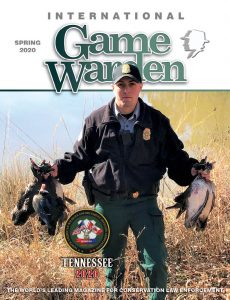Spring 2020
Fish and Wildlife Special Agents and Partners Strike Major Blow to Cactus Black Market

After years of investigation, four cactus traffickers have been sentenced for their role in the illegal harvest, sale, and/or transportation of the protected living rock, a thornless cactus found only in the Big Bend region of Texas and northeastern Mexico.
The defendants were sentenced to a combined total of nine years of probation, one year of unsupervised probation, and they were also ordered to pay a total of $118,804 in fines and restitution and forfeit 17 firearms. There are several more defendants in this case. The fight to stop the illegal harvest of the living rock cactus is ongoing.
These arrests and sentencings come from a concerted effort between multiple agencies, led by special agents of the U.S. Fish and Wildlife Service (FWS), in partnership with Homeland Security Investigations (HSI), U.S. Department of Justice Environmental Crimes Unit, U.S. Postal Inspection Service, the National Park Service (NPS), Texas Parks and Wildlife Department, and Sul Ross State University.***
FWS Special Agent (SA) Eric Jumper of San Antonio, Texas, was the lead agent for the case.
“Never in a million years did I expect to investigate cactus smuggling as a federal officer,” said SA Jumper. “Once I started working the case though, I found it both very interesting and absolutely Fish and Wildlife Special Agents and Partners Strike Major Blow to Cactus Black Market shocking: reading the correspondences between supplier and buyer and learning how insatiable their desire is to get these plants. They will do whatever they can and pay whatever they can. And they don’t just want one cactus. They want as many as they can get.”
This isn’t the first case where federal agents have investigated cactus poachers. FWS Special Agent Albert Gonzales is stationed in El Paso, Texas. Years earlier, SA Gonzales investigated collectors from eastern Europe who illegally harvested cactuses from national parks. He’s an old hand in succulent sleuthing, and assisted SA Jumper on the living rock case.
“You wouldn’t believe the extremes people go to in order to get these plants,” said SA Gonzales. “The collectors I investigated were so knowledgeable about where the plants grow. They also know how to collect and preserve them to make sure they survive the transport back to Europe, and how to propagate them once they are in that colder environment. They’ve learned how to graft our cactuses onto hardier European plants to survive the winter. Unfortunately, many of them have no regard for our laws, and feel entitled to steal our natural resources.”
While previous cases typically dealt with European tourists collecting as a hobby, the living rock (Ariocarpus fissuratus) case focused more on opportunistic poachers in the Big Bend region who were essentially mining the small, plushy, slow-growing cactus from its natural habitat. Law enforcement first got wind of these illegal operations by a stroke of luck.
